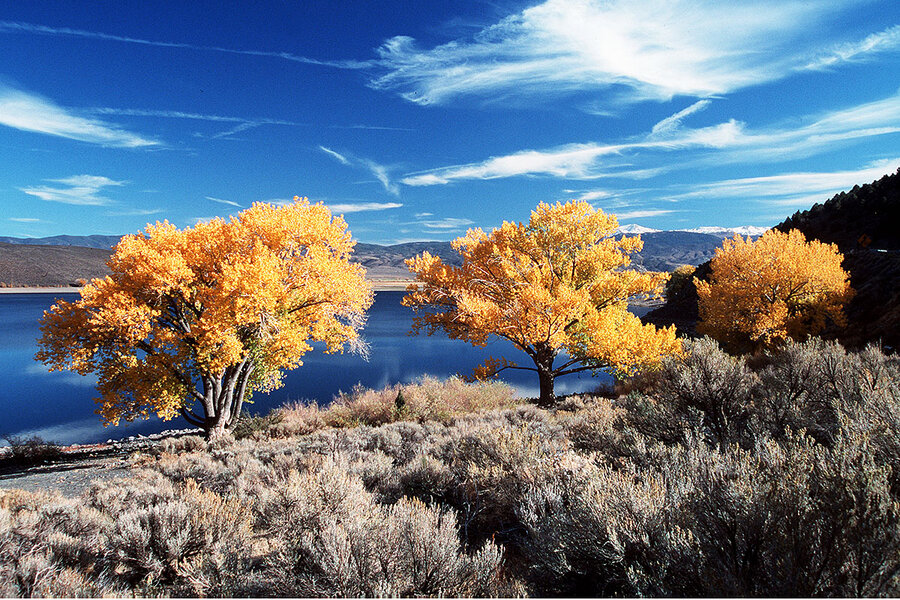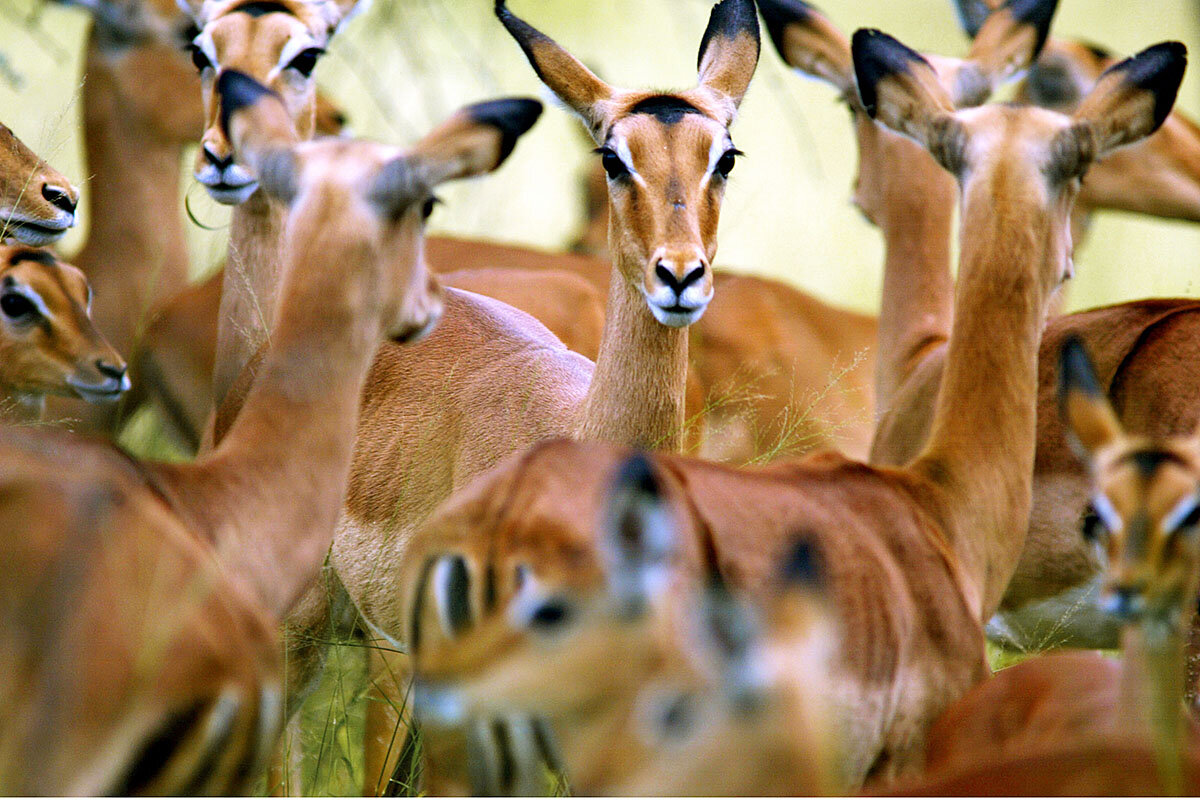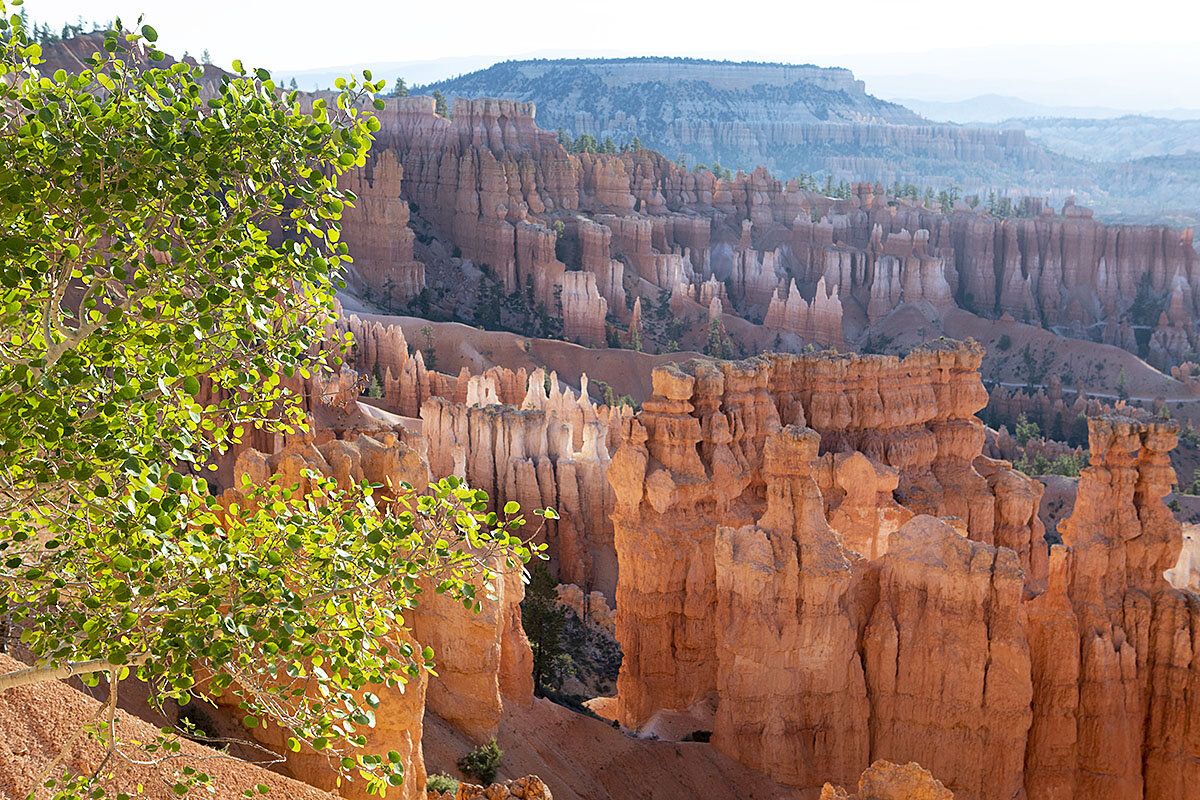Nature is a balm. Even when you can’t leave home.
Some people look for laughter in times of stress. Others seek distraction. But in this time of self-isolation, many are finding respite in nature.
Beyond the promise of fresh air and a change of scenery, spending time with nature invites a sense of calm. The rhythms of the natural world serve as reminders that life goes on, even as we humans are consumed by uncertainty, says Patricia Hasbach, a clinical psychotherapist. It is a reminder that the world is greater than us and our stress.
“Nature is our ally. We’re part of it,” says Dr. Hasbach, who co-directs the ecopsychology program at Lewis & Clark College in Portland, Oregon. “There’s something of real value to just slowing down, allowing ourselves to be part of nature, and experiencing that joy of the bigger world.”
Why We Wrote This
What is it that makes nature a refuge for mental poise? “Nature is our ally. We’re part of it,” one scientist explains. “There’s something of real value to just slowing down, allowing ourselves to be part of nature, and experiencing that joy of the bigger world.”
Editor’s note: As a public service, all our coronavirus coverage is free. No paywall.
Even as government officials have enacted stay-at-home orders, they’ve largely left room for walks and outdoor exercise. And folks have taken advantage of that option. However, in some cases, so many people have been flocking to parks, beaches, and hiking trails that governments have had to close public outdoor spaces because they were getting overrun.
Fortunately you don’t have to climb a mountain or swim in the ocean to reap the calming benefits of nature, researchers say. There are possibilities closer to – or even at – home.
Immersing oneself in a natural landscape yields the most restorative effects, says Dr. Hasbach, but there are several ways to connect to nature and all can be beneficial.
Less direct experiences, like looking out the window at a squirrel in a tree or tending houseplants, may not be as immersive as going for a walk in the woods, but researchers have found these activities can still offer benefits. Even vicarious experiences, such as watching a video panning over sprawling mountains or plains, or listening to recorded sounds of waves crashing on the beach, have been found to alleviate stress.
Dr. Hasbach and colleagues tested out this idea on one of the most nature-deprived groups of people: prison inmates in solitary confinement.
In a yearlong study, the researchers found that exposing inmates to nature videos during their one-hour recreation period yielded a 26% reduction of violent outbursts. When surveyed, many of the inmates reported that recalling the nature videos helped them to calm down when they grew agitated, Dr. Hasbach says. What’s more, the inmates reported feeling calmer for several hours after watching the videos, even after returning to their cells.
One inmate said of the videos, “I get more relaxed. I get away from here,” Dr. Hasbach says. Another reported, “It calms me down, quiets my mind.”
Those of us who are currently self-confining to our homes might be able to tap into those same benefits, Dr. Hasbach says. She suggests seeking out images or footage with wide-open spaces, no humans or built environments visible, and slower scenes with minimal animal conflict or drama – all characteristics of the nature videos most often requested by the inmates.
However, most people practicing social distancing are not actually in solitary confinement and have the freedom to look out a window or door, or even open it to get some fresh air and listen to birdsong or the wind in nearby trees. Or maybe they have a backyard, or at least a stoop to sit on. Researchers agree that there is no replacement for experiencing the natural world more directly.
Even quick trips outside can bring wide-ranging benefits, says Lisa Nisbet, assistant professor of psychology at Trent University in Ontario. In fact, she says, a few brief moments in nature can help restore focus and concentration. So for folks working from home, a quick walk around the block at lunchtime might make for a more productive afternoon.
”When people are exposed to nature, they tend to not only think more creatively and feel better,” says Dr. Nisbet, “but tend to be kinder and more generous with other people.”
In that vein, Dr. Nisbet also suggests citizen science projects can be a way to both experience nature and contribute to a greater good. There are many projects online that involve watching critter cams and logging what you see, or keeping a tally of the birds you see out your window.
The positive effects of nature aren’t just limited to pleasant sunny days, Dr. Nisbet adds. “It’s easy to say, I don’t feel like going for a walk or it’s a little bit rainy out there or it’s cold,” she says. “It’s always better than I expect. I never regret getting outdoors in nature. And that’s any kind of nature.”
Editor’s note: As a public service, all our coronavirus coverage is free. No paywall.








